Week in images: 17 - 21 January 2022
Friday, 21 January 2022 13:09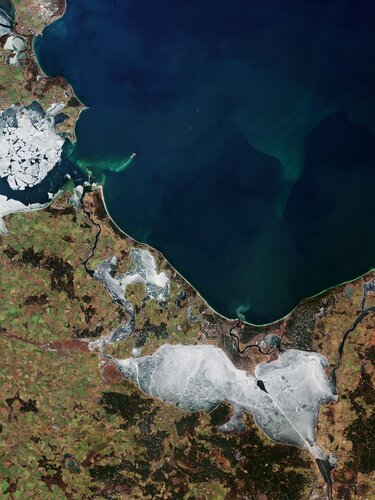
Week in images: 17 - 21 January 2022
Discover our week through the lens
New location, same ASIM
Friday, 21 January 2022 11:58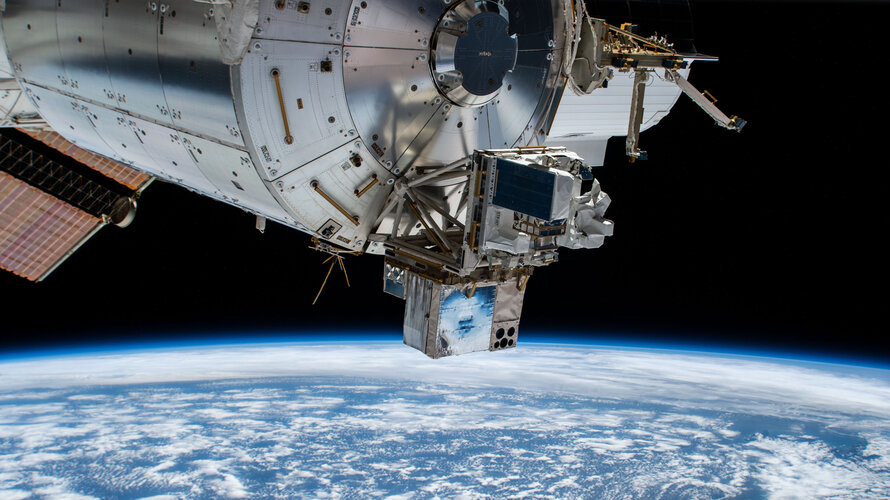 Image:
Image:
The first-of-its-kind complement of instruments dubbed the ‘space storm hunter’ hangs out in its new location outside the International Space Station in this image taken by on of the Station’s external cameras.
The Atmosphere–Space Interactions Monitor, or ASIM for short, measures electric events in Earth’s upper atmosphere with cameras, photometers and X- and gamma-ray detectors.
Last week ASIM was switched off and moved by robotic arm to another spot outside the Columbus module to make room for an American payload. Now in its new location, the instrument is being activated and so far things are going well.
From its new
Bigelow Aerospace transfers BEAM space station module to NASA
Friday, 21 January 2022 11:34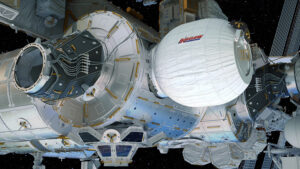
NASA has hired a new company to provide engineering support for an inflatable module on the International Space Station originally built and managed by Bigelow Aerospace.
Ariane 6 upper stage readies for tests at Europe's Spaceport
Friday, 21 January 2022 09:00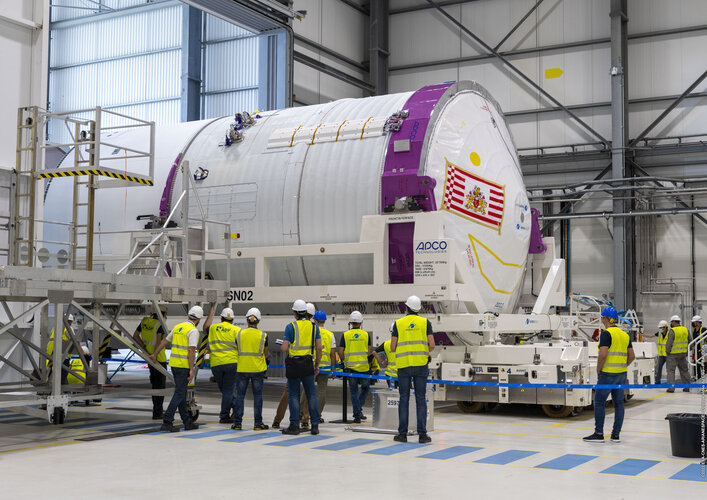
The central core of ESA’s new generation Ariane 6 launch vehicle arrived at Europe’s Spaceport on 18 January and is now inside the launch vehicle assembly building.
ESA/WEF panel discussion and call with Matthias Maurer
Friday, 21 January 2022 08:00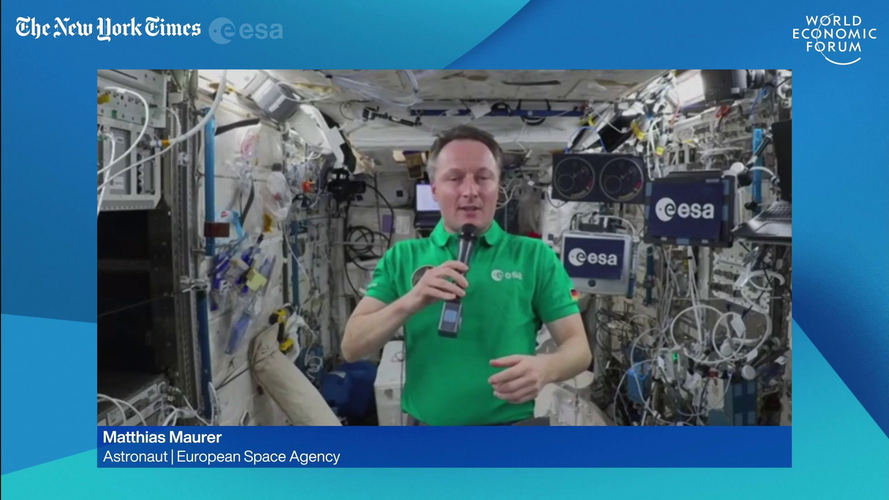 Video:
01:00:30
Video:
01:00:30
Watch the replay of ‘Live from Space: The Next Frontier for Knowledge and Action’. ESA astronaut Matthias Maurer, live from the from the International Space Station discussed with a panel of prominent experts and industry leaders, including ESA’s Director General Josef Aschbacher, about how space research can improve life on our planet.
Earth from Space: Mecklenburg–West Pomerania, Germany
Friday, 21 January 2022 08:00
Part of Mecklenburg–West Pomerania, also known as Mecklenburg-Vorpommern, a state in northeast Germany is featured in this image captured by the Copernicus Sentinel-2 mission. A portion of the northwest coast of Poland can be seen in the right of the image.
NASA Offers $1 Million for Innovative Systems to Feed Tomorrow's Astronauts
Friday, 21 January 2022 04:44 As NASA prepares to send astronauts further into the cosmos than ever before, the agency aims to upgrade production of a critical fuel source: food. Giving future explorers the technology to produce nutritious, tasty, and satisfying meals on long-duration space missions will give them the energy required to uncover the great unknown.
In coordination with the Canadian Space Agency, NASA is
As NASA prepares to send astronauts further into the cosmos than ever before, the agency aims to upgrade production of a critical fuel source: food. Giving future explorers the technology to produce nutritious, tasty, and satisfying meals on long-duration space missions will give them the energy required to uncover the great unknown.
In coordination with the Canadian Space Agency, NASA is NASA prepares final rocket tests for first Artemis moon mission launch
Friday, 21 January 2022 04:44 NASA is preparing the huge Space Launch System moon rocket for final tests on a Kennedy Space Center launchpad in February that would clear the way for a moon launch as early as late March.
The 322-foot-tall SLS rocket for the Artemis I mission is the largest since the last Saturn V rocket rolled out to a launch pad in 1972.
The first lunar mission in decades will help NASA understan
NASA is preparing the huge Space Launch System moon rocket for final tests on a Kennedy Space Center launchpad in February that would clear the way for a moon launch as early as late March.
The 322-foot-tall SLS rocket for the Artemis I mission is the largest since the last Saturn V rocket rolled out to a launch pad in 1972.
The first lunar mission in decades will help NASA understan Dust storm grounded Mars helicopter, but it's ready to fly again
Friday, 21 January 2022 04:44 One of the Red Planet's famous dust storms has kept the Mars helicopter Ingenuity grounded for two weeks, but the aircraft is scheduled for its 19th flight as early as Sunday, according to NASA.
Around the first of the year, NASA planned Flight 19 of the tiny, 4-pound helicopter on Jan. 5. But weather forecasters on Ingenuity's team in California noticed signs of the approaching dust st
One of the Red Planet's famous dust storms has kept the Mars helicopter Ingenuity grounded for two weeks, but the aircraft is scheduled for its 19th flight as early as Sunday, according to NASA.
Around the first of the year, NASA planned Flight 19 of the tiny, 4-pound helicopter on Jan. 5. But weather forecasters on Ingenuity's team in California noticed signs of the approaching dust st SETI's plan for a sky-monitoring telescope on the moon
Friday, 21 January 2022 04:44 The SETI Institute teamed up with Louisiana State University (LSU) and Mississippi State University (MSU) to help students design the science program for AstronetX PBC's first lunar-based camera (L-CAM 1). The scientific program planning is funded by a Gordon and Betty Moore Foundation grant to AstronetX. Additional funding for student participation is provided by the National Science Foundation
The SETI Institute teamed up with Louisiana State University (LSU) and Mississippi State University (MSU) to help students design the science program for AstronetX PBC's first lunar-based camera (L-CAM 1). The scientific program planning is funded by a Gordon and Betty Moore Foundation grant to AstronetX. Additional funding for student participation is provided by the National Science Foundation Perseverance's first year on Mars: Purdue professor, mission team member looks at what is ahead
Friday, 21 January 2022 04:44 Almost one year into the Mars rover mission, accomplishing its goal is on the horizon for Purdue University's Briony Horgan and the Perseverance team.
Feb. 18 will mark one year since the rover landed on the red planet following a seven-month, 300-million-mile flight across space.
Horgan, associate professor of planetary science in the Purdue College of Science's Department of Earth,
Almost one year into the Mars rover mission, accomplishing its goal is on the horizon for Purdue University's Briony Horgan and the Perseverance team.
Feb. 18 will mark one year since the rover landed on the red planet following a seven-month, 300-million-mile flight across space.
Horgan, associate professor of planetary science in the Purdue College of Science's Department of Earth, Arianespace to launch Microcarb on Vega C
Friday, 21 January 2022 04:44 Arianespace has been awarded a launch contract by ESA, on behalf of the European Commission, to launch Microcarb in 2023 on Vega C. Microcarb is a 190kg satellite developed by CNES that will be delivered into a sun-synchronous orbit, 650km above the Earth.
"We are very proud of this new launch contract, which underlines the capacity of Arianespace to design the most competitive launch solu
Arianespace has been awarded a launch contract by ESA, on behalf of the European Commission, to launch Microcarb in 2023 on Vega C. Microcarb is a 190kg satellite developed by CNES that will be delivered into a sun-synchronous orbit, 650km above the Earth.
"We are very proud of this new launch contract, which underlines the capacity of Arianespace to design the most competitive launch solu The Proba-3 program takes an important step in the integration of its two satellites
Friday, 21 January 2022 04:44 The Proba-3 program, spearheaded by SENER Aeroespacial, the project's prime contractor for the European Space Agency (ESA), has accomplished several relevant milestones in the integration of the two satellites that will, for the first time, demonstrate a high- precision formation flight in space.
In the future, spacecraft formation flying technology will be used to replace bulky structures
The Proba-3 program, spearheaded by SENER Aeroespacial, the project's prime contractor for the European Space Agency (ESA), has accomplished several relevant milestones in the integration of the two satellites that will, for the first time, demonstrate a high- precision formation flight in space.
In the future, spacecraft formation flying technology will be used to replace bulky structures ESA looks to space summit to endorse human spaceflight efforts
Friday, 21 January 2022 00:00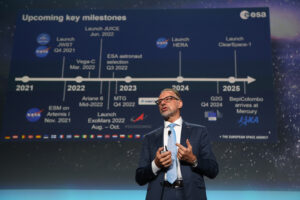
The head of the European Space Agency says he hopes an upcoming space summit provides a political endorsement for major European space initiatives, including a human space exploration program.
OneWeb forges Indian distribution partnership
Thursday, 20 January 2022 22:20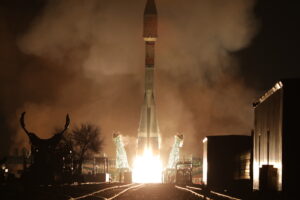
OneWeb has signed a deal to distribute broadband in India through a local partner as it hopes to get regulatory permission for its low Earth orbit services this year.

